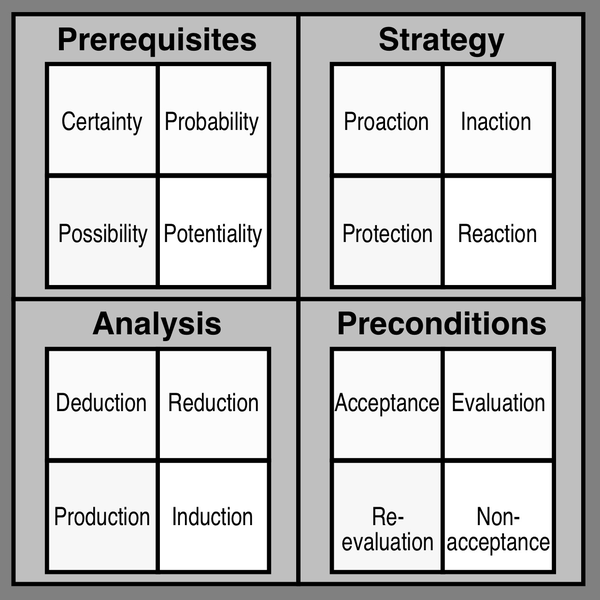A Dramatica Approach To Understanding Methodologies
Some terms are harder than others to comprehend.
As powerful as Dramatica is, it does come with some frustratingly complicated terminology--especially when you reach the very bottom of the theory chart. Terms like Production and Induction and Potentiality seem less like Dramatica terms of narrative and more like increasingly convoluted ways of saying the same thing.
Only they're not.
The 256 elements at the Character level delineate very specifically a unique quality of character. Split into sections labeled Motivations, Methodologies, Evaluations and Purposes, these elements form the foundation of characters within a narrative.

There is a reason the Dramatica theory book focuses only on Motivations--they're the easiest to understand. Faith, Disbelief, Pursuit and Avoid are easy to comprehend and apply to story because we encounter them on a daily basis. Our culture loves them. It's when we diverge from that well worn Western path into conflicts of Methodologies and Purpose that we begin to lose clarity. Once the domain of European and independent cinema, the Methodology area claims increased interest in recent years. The Social Network, Mad Men, Nightcrawler and even Disney's Frozen all focus conflict in this area. Understanding the subtle differences between these elements becomes a priority for Authors working today.
Sets and Seeds
Most of these terms work towards increasing or decreasing a particular set of items. When decreasing, the one employing the technique starts with a set of items. When increasing, a gem or seed of inspiration is required.
With Production you take that seed of inspiration and see what you can come up with. You can totally disregard that original seed in the final product if you want to; all that matters is the inspiration that led to the burst of creativity.
With Induction, you have to maintain that seed of inspiration, as it becomes a part of what you are inducing. You're hypothesizing what could be, from what you see--but you have to include what you see.
With Reduction you look to the things that are shared by your sample set and you reduce them down. You focus on the commonalities.
And finally with Deduction you need to look at what all of them have in common.
Elementary Elements
Of course, many think of Sherlock Holmes when they see Deduction, but he wasn't really using that technique--he was using Induction. Holmes would take various bits of evidence and induce or hypothesize what they mean, coming up with all kinds of different scenarios. Then he would reduce those down to their common shared elements. Induction followed by Reduction.
And now you have some clarity to blow away your friends at the next cocktail party when it comes to the true problem-solving technique of one of the world's most famous detectives.
Download the FREE e-book Never Trust a Hero
Don't miss out on the latest in narrative theory and storytelling with artificial intelligence. Subscribe to the Narrative First newsletter below and receive a link to download the 20-page e-book, Never Trust a Hero.

